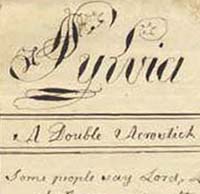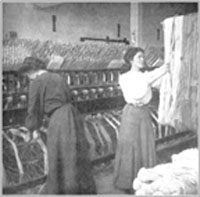|
Early Nineteenth-Century Woman’s Sphere Gender conventions, like so many
other aspects of American life, changed dramatically in the nineteenth
century. Developments in commerce, industry, and transportation
reshaped the parameters of manhood and womanhood in the small towns
and countryside of Addison County, Vermont. As men confronted an
increasingly fluid, individualistic, and competitive public sphere,
women and the domestic sphere came to represent moral virtue. As
Nancy Cott observes, and as the experiences of women like Charity
Bryant, Sylvia Drake, and Caroline and Rebecca Ford suggest, the
doctrine of separate spheres afforded women a range of possibilities
for public and private expression. While “piety, purity, domesticity,
and submissiveness,” might have characterized a woman like
Betsy Miner, young women like the Ford sisters left home to pursue
factory work, while others like Charity Bryant and Sylvia Drake
explored a life of mutual devotion exclusive of heterosexual marriage.
Even Betsy Miner, whose letters to her mother reflect a more conventional
experience of domesticity, contributed to her family’s financial
enterprises in sometimes unconventional ways. |


